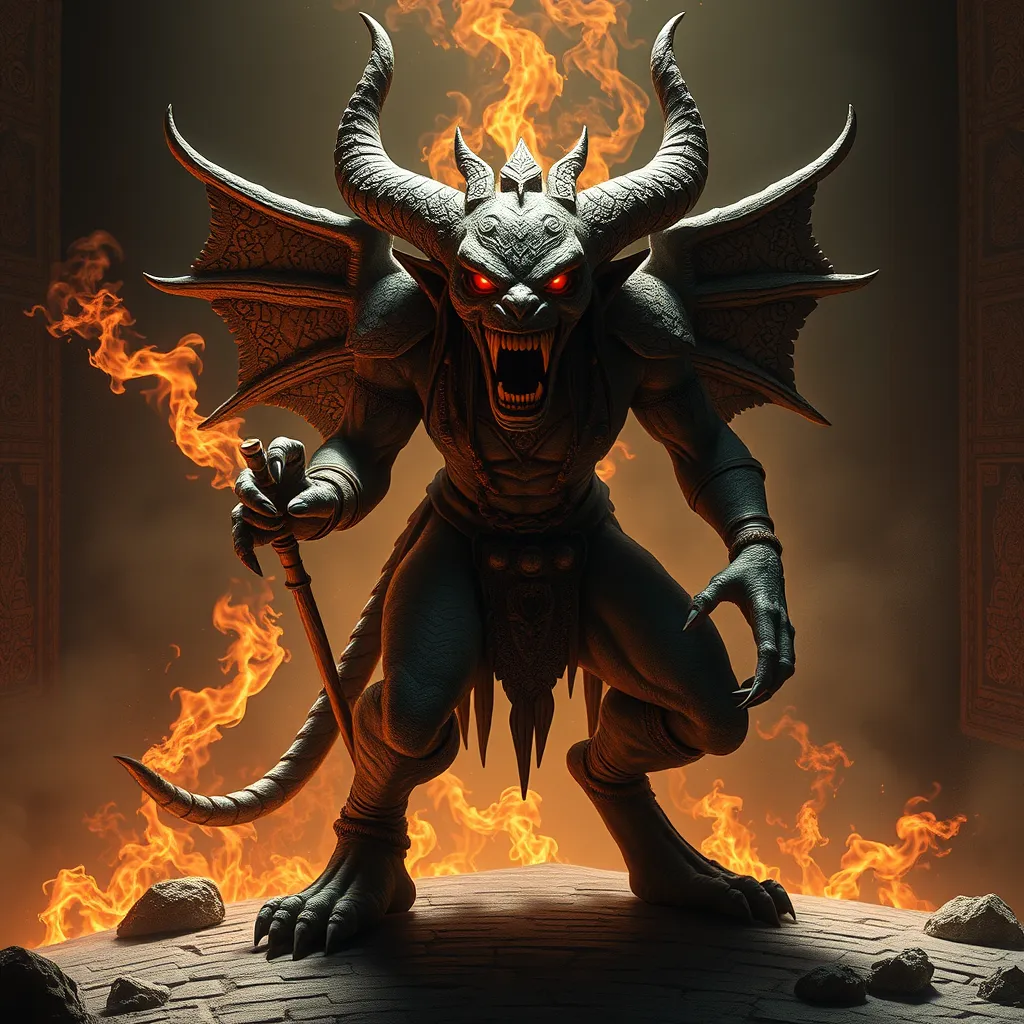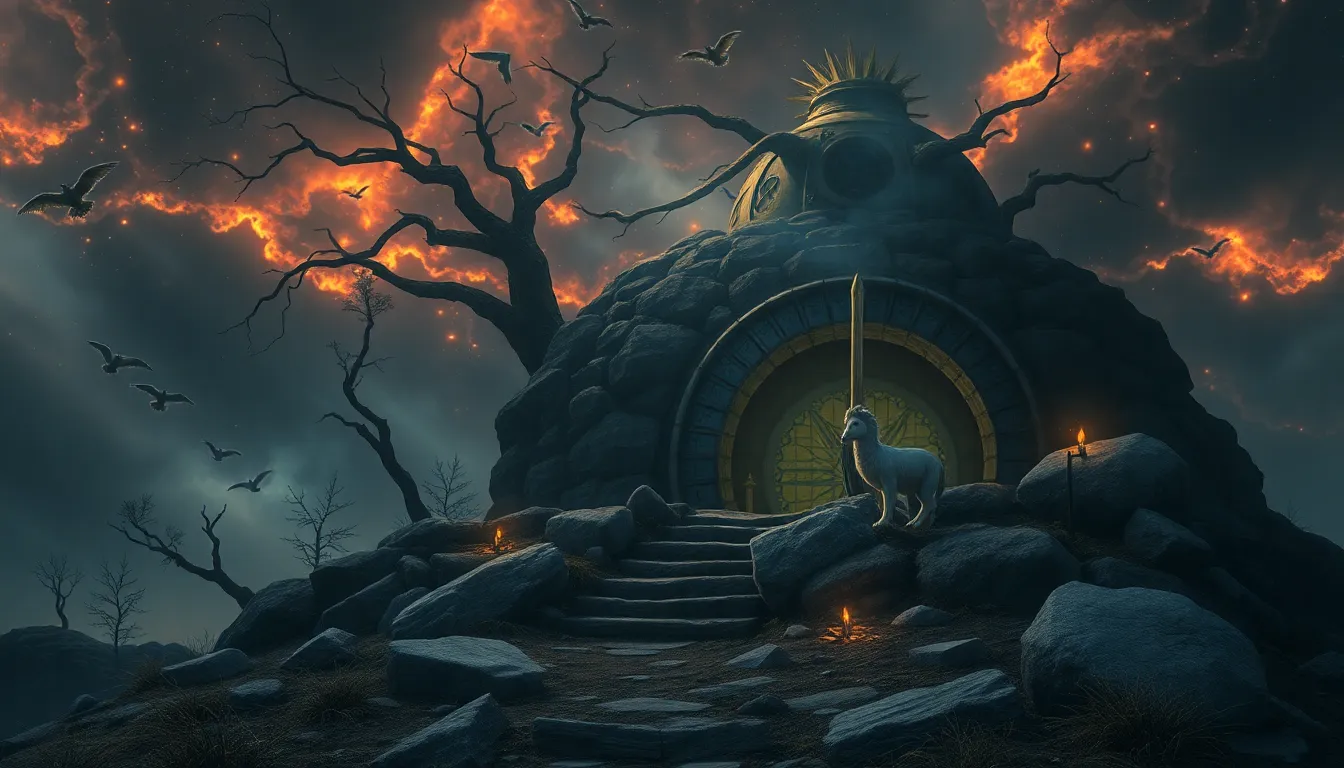The Rakshasa in Ancient Mesopotamian Folklore: The Demons of the Sumerian Underworld
I. Introduction
The term “Rakshasa” traditionally refers to a class of demons in Hindu mythology, but its interpretations and roles have transcended cultural boundaries over time. In the context of ancient Mesopotamian folklore, particularly within Sumerian beliefs, Rakshasa embodies the duality of supernatural beings that can act as both protectors and tormentors. This article aims to explore the cultural beliefs surrounding Rakshasa in Sumerian mythology, their significance in the Sumerian underworld, and their lasting impact on the understanding of ancient Mesopotamian culture.
II. Historical Context of Mesopotamian Folklore
Ancient Mesopotamia, often referred to as the cradle of civilization, was located between the Tigris and Euphrates rivers, encompassing parts of modern-day Iraq, Syria, and Turkey. This region was known for its rich cultural heritage, including the development of writing, urbanization, and complex religions.
Mythology and folklore played an integral role in Sumerian society, serving as a means to explain natural phenomena, social order, and the cosmos. The Sumerians believed in a plethora of supernatural beings, including gods, goddesses, and demons, which influenced their daily lives and practices.
Demons were significant figures in Mesopotamian beliefs, often viewed as entities that could influence human fate, health, and fortune. They were perceived as both protectors of the divine order and threats to human existence.
III. The Concept of the Underworld in Sumerian Mythology
The Sumerian underworld, known as Kur, is a complex realm where the souls of the deceased resided. It was not a place of punishment but rather a shadowy existence where the dead lived in a state of dimness, reflecting a melancholic afterlife.
Key figures associated with the underworld include:
- Ereshkigal: The queen of the underworld, representing death and darkness.
- Gilim: The god of the underworld, who governs the fate of souls.
- Dumuzi: A deity associated with fertility and the cyclical nature of life and death.
The afterlife was of great significance in Sumerian culture, as it was believed that proper burial rites and offerings could ensure a peaceful existence in Kur.
IV. Characteristics and Attributes of Rakshasa
In Sumerian folklore, Rakshasa are depicted with various physical and behavioral traits. Traditionally, they are described as fearsome beings with the ability to shape-shift, often taking on grotesque forms to terrify humans.
Common characteristics include:
- Physical Descriptions: Rakshasa are often portrayed with long claws, sharp teeth, and wild hair.
- Behavioral Traits: They are known for their cunning nature, often employing trickery to achieve their goals.
- Common Myths: Stories of Rakshasa often involve themes of revenge, protection of sacred places, and the balance between good and evil.
The duality of Rakshasa is particularly noteworthy; they can act as guardians of the underworld, ensuring that the souls remain safe, or as tormentors that challenge the living and the dead alike.
V. The Role of Rakshasa in Sumerian Mythology
Rakshasa feature prominently in various Sumerian legends, often embodying the struggle between good and evil. They serve as antagonists to heroic figures, representing the chaos that threatens the order of the cosmos.
Key stories involving Rakshasa include:
- The Tale of Gilgamesh: In this epic, Rakshasa are depicted as formidable opponents that Gilgamesh must confront during his quest for immortality.
- Inanna’s Descent: The goddess Inanna encounters Rakshasa in her journey to the underworld, illustrating their role as guardians of the afterlife.
The symbolism of Rakshasa transcends simple storytelling; they embody the constant conflict between order and chaos, illustrating the Sumerians’ understanding of morality and divine justice.
VI. Cultural Interpretations of Rakshasa
The impact of Rakshasa on Sumerian art and literature is profound, as these beings are often depicted in sculptures, reliefs, and inscriptions. They represent not only fear and danger but also the complex nature of existence.
Variations of Rakshasa can be found across different Mesopotamian cultures, each adapting the demon’s characteristics to fit their unique mythological frameworks. In Babylonian mythology, for example, similar figures embody the chaos of the underworld.
The influence of Rakshasa has extended beyond ancient Mesopotamia, impacting later mythologies and religions. Their characteristics have been echoed in various cultures, symbolizing the enduring fascination with demons and the supernatural.
VII. Modern Relevance and Legacy
Today, the figure of Rakshasa continues to captivate the imagination, appearing in literature, films, and video games. Modern interpretations often reflect ancient beliefs, showcasing the timeless nature of these demonic figures.
Contemporary culture has seen a resurgence of interest in ancient myths, with Rakshasa serving as a reminder of humanity’s enduring struggles with morality, fear, and the unknown.
Preserving ancient folklore is vital in today’s society, as it provides insight into the cultural fabric of past civilizations. Understanding figures like Rakshasa enriches our appreciation of human creativity and the complexities of our shared history.
VIII. Conclusion
In summary, Rakshasa holds a significant place in ancient Mesopotamian folklore, particularly within the context of the Sumerian underworld. Their dual nature as both protectors and tormentors illustrates the complex relationship between good and evil in Sumerian mythology.
The enduring legacy of Rakshasa serves as a bridge between ancient cultural beliefs and modern interpretations, reflecting the timeless fascination with demons and the supernatural. Through the exploration of such figures, we gain a deeper understanding of ancient Mesopotamian culture and the universal themes of fear, morality, and the afterlife.
Ultimately, the significance of demons like Rakshasa in folklore highlights the power of human imagination and the enduring quest to understand the unknown.



